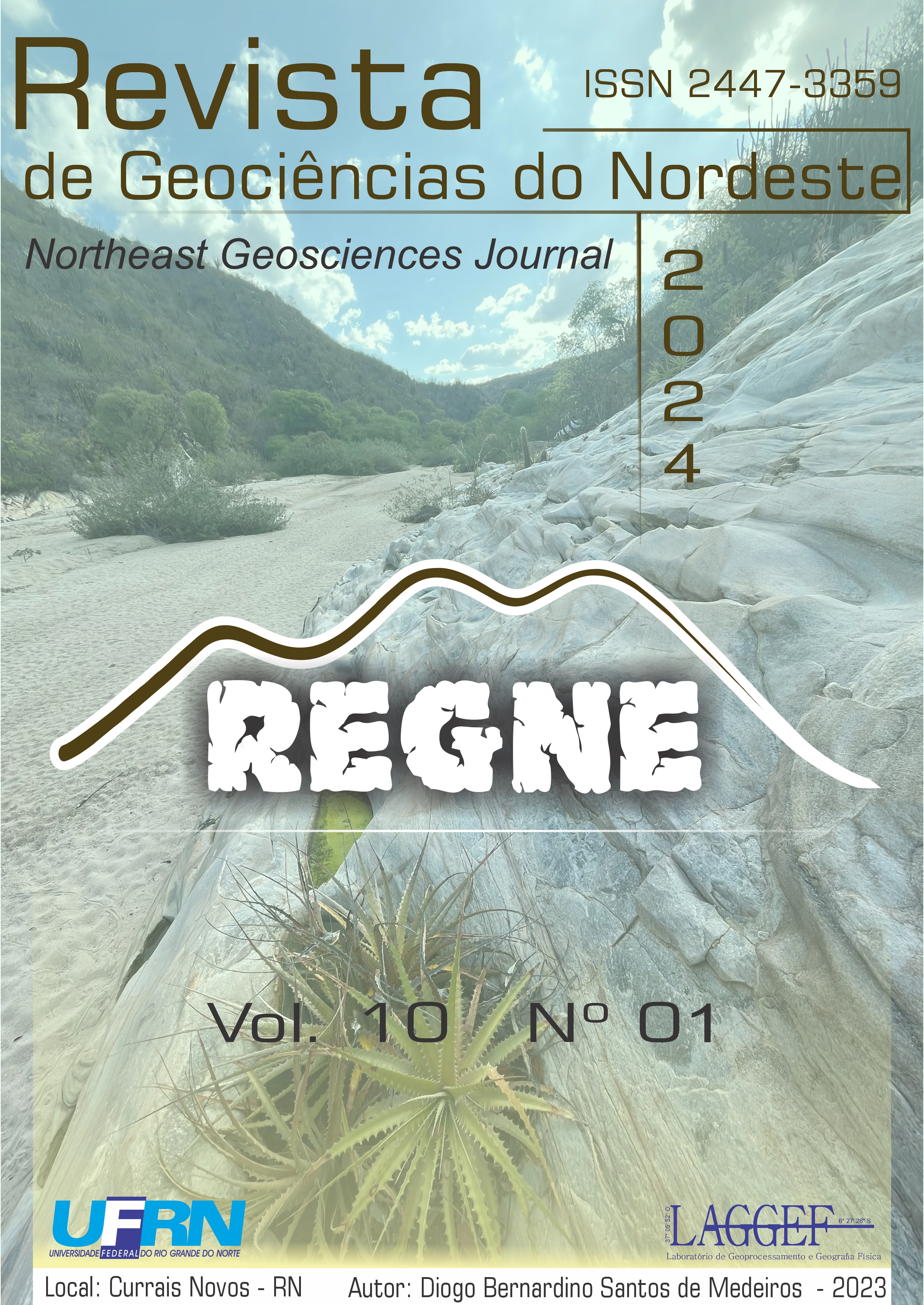Análise da morfodinâmica do Monumento Natural das Falésias de Morro Branco, Ceará, Brasil
Morphodynamics analysis of the Natural Monument of the cliffs of Morro Branco-Ceará-Brazil.
DOI:
https://doi.org/10.21680/2447-3359.2024v10n1ID32713Abstract
Coastal environments are intense vulnerable, and in the case of the Falésias de Morro Branco, the disorderly occupation contributes to the realization of risks to the local population, to and to the Natural Monument. of Morro Branco, and contest the use of the land, the elements of interaction of the environment, the risks and the perception of the main agents in the area (Bugueiros and tourism agents). The research used as a basis the first three sub-steps of the ICZM methodology: characterization of the area, definition of management units and data ordering. The morphodynamic analysis was carried out through the use of drone images and photographs during field visits, in addition to the collection of tidal and rainfall data. To analyze the environmental perception, a survey was carried out with buggy drivers and tourism agents, totaling approximately 80 samples. results indicate: rainfall and human occupation as important agents in modifying the geomorphological landscape. Perception data indicate that the main perceived risk comes from mass movement and undermining of occupied slopes, which refers to the need for integrated cost management practices that favor sustainability`.
Downloads
Downloads
Published
How to Cite
Issue
Section
License
Copyright (c) 2024 Notheast Geoscience Journal

This work is licensed under a Creative Commons Attribution 4.0 International License.


 Português (Brasil)
Português (Brasil) English
English







